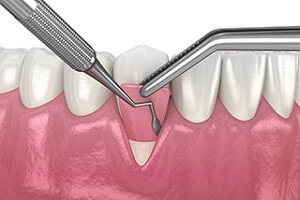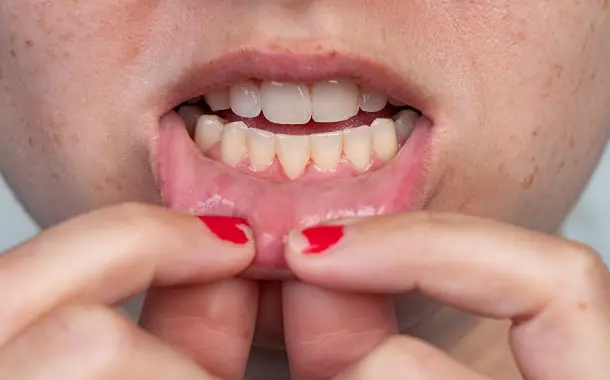The Cost of Gum Grafts
Last Updated on December 27, 2023
Written by CPA Alec Pow | Content Reviewed by ![]() CFA Alexander Popinker
CFA Alexander Popinker
There are patients who suffer from receding gums. What is this withdrawal? Well, gum recession is the process by which the tissue around the teeth pulls away from the teeth and the root becomes much more exposed. The solution for receding gums is gum grafts.
If the tissue pulls away from around the teeth, the root becomes more exposed, and the tooth sensitivity will increase. At the same time, there is a risk of the appearance of pain or the loss of the tooth altogether, if the root remains “in sight”. In addition, it is also about the aesthetic factor. This condition affects approximately 10% of the population.
How Much Does a Gum Graft Cost?
The main factors that will affect the cost of gum graft surgery are the degree of gum recession and the size of the area that is affected. Expect to pay anywhere between $620 and $1,250 for a small area around one tooth.
In general, at least a part of the cost of a gum graft is covered by dental insurance. Because this is a surgical procedure, if deemed medically necessary, some coverage for gum graft surgery may be offered by medical insurance. In order to help you cover the costs of a gum graft, there are available payment plans and other options.
Overview: Costs of Gum Graft (per area)
| Average cost | |
| AlloDerm gum graft | $700–$3,400 |
| Connective-tissue graft | $700–$3,400 |
| Free gingival graft | $700–$3,400 |
| Gum contouring | $1,200–$3,400 |
| Pedicle graft | $700–$3,400 |
| Factors that can increase the cost of the grafting treatment | When this procedure is performed by a specialist in the field |
| If you need a donor to give you additional tissue or if it has to be taken from a cadaver | |
| Expect to spend about $500 for x-rays and the initial exam. Specialized cleaning, if needed, will also cost more. Anesthesia will be charged additionally, as well as any surgery-related fees | |
| Placement of the gum tissue in harder-to-reach areas that will take longer to treat | |
| Additional procedural fees | Gum problems that are complicated or require the covering of multiple tooth roots |
Factors affecting the cost of gum graft
Besides the factors mentioned in the beginning, there are some other factors that will influence the costs of a gum graft, such as:
- the type of surgery performed: usually, the tissue harvested from your mouth will cost less, while the tissue from a donor is more expensive;
- the area that has to be grafted: this refers to the severity and amount of gum recession;
- if gum contouring is performed at the same time: the costs will increase, usually to double, if this surgery trims the gums for a more cosmetic look;
- the location of the office: the geographical area will affect the costs;
- the specialist doing the surgery: in general, a periodontist costs more than a dentist.
In general, a gum graft costs around $1,050, if only a small area and one tooth are being grafted. The cost for more extensive surgery and a larger area, especially, using a donor, will be higher.
You might also like our articles on the cost of gingivectomy, teeth gap fixing, or crown reattachment.
Procedural costs for a gum graft
When talking about gum graft surgery, there are some other costs to consider, besides the costs for the actual procedure. This surgery will involve other treatment fees, such as:
- initial consultation and exam;
- anesthesia;
- dental cleaning: before continuing the treatment, patients with tartar buildup or heavy plaque may need specialized cleaning, like a gross debridement cleaning or a dental deep cleaning, also known as scaling and root planning cleaning;
- comprehensive periodontal examination;
- X-rays.
You may want to get gum contouring treatment when you get your gum grafting done. During gum reshaping or gum contouring, your specialist or dentist will use techniques and tools for shaping your existing gum tissue or removing the excess gum tissue.
Usually, insurance does not cover the costs of gum contouring. This treatment can cost anywhere between $1,100 and $3,100.
Gum grafts overview
The gum graft or gum remodeling is a surgical intervention that consists in taking a portion of tissue from the roof of the mouth and transplanting this sample to the gum level of one or more teeth. At the level of the tooth, the portion of the mucosa is revascularized, becoming the new gum of the tooth.
At the end of the procedure, patients may feel a sensitivity for a few days after the intervention, but analgesics or anti-inflammatories can be administered. The healing period is between two and four weeks. Normally, the intervention lasts between 30 and 90 minutes and depends on the amount of tissue to be replaced.
Gum grafting is often recommended for patients experiencing receding gums. When it appears, the tooth takes on an elongated, disharmonious appearance. Gum recession occurs due to factors such as periodontal disease, smoking, teeth grinding during sleep, or aggressive brushing.
At the same time, in addition to the visibly damaged dental structure (due to periodontal disease), gingival correction is also carried out for good smile aesthetics, so that the gums are in perfect harmony with the teeth (it takes place without any incision). The intervention is done to correct certain defects from birth or resulting from trauma, the patient regaining his confidence in his own smile.
Types of gum grafts
AlloDerm gum graft
This type of gum graft is a collagen material that is registered and trademarked. This is placed over the recessed gums for protecting gum roots and restoring the health of the gums. AlloDerm gum graft doesn’t need tissue to be harvested from your mouth or a donor.
Free gingival grafts
This type of graft consists in taking a portion of tissue from the palate. However, its characteristic is represented by the fact that only epithelial tissue will be sampled, not connective tissue.
Free gingival grafting is preferred for people who do not have sufficiently developed gums. They require minimal tissue addition. As a result, the sampled tissue is also small.
Connective tissue grafts
This type of graft is the most used. In order to achieve it, it is necessary to make an incision at the level of the palate. Afterward, an appropriate portion is taken to cover the affected area. Both surface epithelial tissue and deeper connective tissue will be sampled. It will promote the adhesion of the graft to the gingival area and ensure faster healing.
After sampling, that portion will be attached by means of sutures to the affected area. The incision at the level of the palate will also be sutured so that it can heal.
Pedicle graft
In the case of this type of graft, it is not necessary to take a portion of tissue. To achieve this, it is necessary to make an incision at the gum level of the tooth adjacent to the affected one. A portion of the gum is partially detached from which a graft is made. This is attached with one end to the tooth it belongs to and the other end will be attached to the gum of the affected tooth. In this way, a band of gum is formed, which will ensure stability.
This type of graft can only be performed in people who have enough gum on the teeth near the affected area.
Using insurance coverage
 If it is not done for cosmetic reasons, but for medical purposes, at least a part of the cost of a gum graft surgery will be covered by dental insurance. Also, medical insurance may partially cover the costs if the gum graft surgery is necessary to prevent tooth and bone loss and cover exposed roots.
If it is not done for cosmetic reasons, but for medical purposes, at least a part of the cost of a gum graft surgery will be covered by dental insurance. Also, medical insurance may partially cover the costs if the gum graft surgery is necessary to prevent tooth and bone loss and cover exposed roots.
Your dental and medical insurance may vary widely based on your specific plan, provider, and location. You should contact your health insurance provider and ask for all the details regarding the costs that are covered for a gum graft surgery.
The costs of a gum graft treatment may be partially to fully covered by health insurance. The sum of money you will have to pay out of your pocket will depend on the level of coverage and your specific plan.
Extra payment options
Regardless of whether your insurance covers a part of the cost of your gum graft surgery, you are still responsible for out-of-pocket costs, which could be hundreds of dollars. Your health insurance policy may not cover any of the costs if your gum graft is done for cosmetic purposes. In this situation, you will have to pay the whole sum out-of-your pocket.
There are several methods you can use to ease the payment of these expenses, including:
- Health Savings Accounts (HAS): you can use funds from your tax-free account to cover the expenses of gum graft surgery because this is usually considered a medical procedure;
- payment plans: most periodontal and dental offices provide payment plans that let you pay for the treatment in installments over time;
- dental plans: you can take advantage of many dental discount plans for some dental treatments;
- financing: usually, dental offices offer financing options to help you with costs.
Before deciding where to have gum graft surgery done, shop around and consider a second opinion. The cost may vary depending on the geographical area and specialist.
FAQs
Does gum graft last forever?
A well-performed gum graft can last forever with proper follow-up care. Usually, the surgery is permanent, but only when the original cause of receding gums is treated first.
The healing process is fast thanks to the lack of scalpel marks and sutures. Also, the recovery stage is comfortable but takes time.
Is a gum graft covered by insurance?
Normally, medical insurance covers the cost of gum grafts. Without insurance, the costs can be pretty high, especially when the grafted area is large. Though, insurance does not cover everything.
The costs are covered only if the procedure is deemed medically necessary and is not done for cosmetic purposes. Medical insurance partially covers the costs if the surgery is performed to cover the exposed roots and prevent bone loss.
Is a gum graft worth it?
As long as the gum graft helps you to prevent lifestyle or age-related gum loss, it is worth the investment, even though it is not medically necessary in all situations. Due to wear and tear from regular brushing, it is almost inevitable to avoid the thinning of gums. There may be an even greater problem if the gums are thinning because of periodontal disease.
The most successful treatment for receding gums is the gum graft.
Is the procedure painful?
The gum graft surgery does not hurt at all, being performed under local anesthesia. After the intervention, there may be slight sensitivity for a few days.


Leave a Reply
Want to join the discussion?Feel free to contribute!